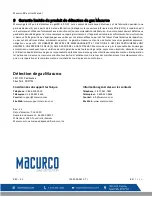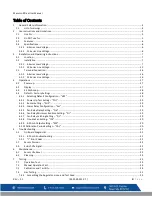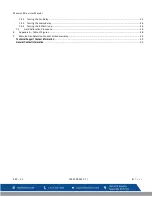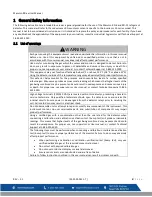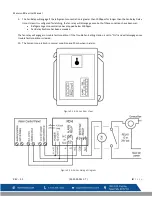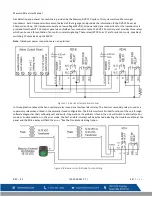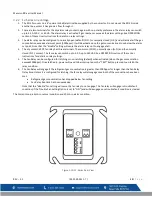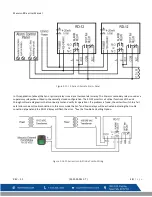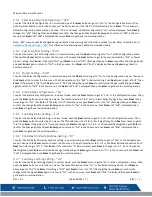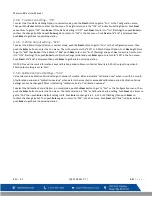
Macurco RD-xx User Manual
REV – 2.1
[34-2900-0511-7 ]
7
|
P a g e
3
Installation and Operating Instructions
The following instructions are intended to serve as a guideline for the use of the Macurco RD-xx Refrigerant Detector. It is not to
be considered all-inclusive, nor is it intended to replace the policy and procedures for each facility. If you have any doubts about
the applicability of the equipment to your situation, consult an industrial hygienist or call Technical Support at 844-325-3050.
WARNING
This detector helps monitor for the presence and concentration level of a certain specified
airborne gas. Misuse may produce an inaccurate reading, which means that higher levels of the
gas being monitored may be present and could result in overexposure and cause serious injury
or death. For proper use, see supervisor or User manual, or contact Technical Support at 1-844-
325-3050.
3.1
Location
A RD-xx is normally mounted low in the room on a wall or column one foot above the floor in a central area where air
movement is generally good. Use the same spacing as for smoke detectors, 30-foot centers, 900 square feet per detector (84 sq.
meters). The coverage depends on air movement within the room or facility. Extra detectors may be needed near any areas
where people work or where the air is stagnant. The RD-xx mounts on a 4x4 electrical box supplied by the contractor. Do not
install the RD-XX inside another box unless it has good air flow through it. Do NOT mount the RD-xx where the normal ambient
temperature is below 0°F or exceeds 125°F (below -18°C or above 52°C).
WARNING
High voltage terminals (120/240 VAC) are located within this detector, presenting a hazard to
service technicians. Only qualified technicians should open the detector case and service the
internal circuits. Ensure power is de-energized from the detector relays prior to servicing the
unit. Failure to do so may result in electrical shock.
3.2
Installation
3.2.1
6-Series Low Voltage
1.
The RD-6 mounts on a 4” square (or 4x4) electrical box supplied by the contractor. Do not mount the RD-6 inside
another box, unless it has good air flow through it.
2.
Connect the RD-6 to Class 2 power supply only. It is suggested to use a separate transformer for powering the unit or
units because of possible interferences from other devices on the same power supply.
3.
Connect the RD-6 to the control cables with terminal plugs. When making connections, make sure the power is off.
4.
There are two terminals for Power: 12 to 24 VAC or 12 to 32 VDC, with no polarity preference.
5.
There are two terminals for the dry alarm relay contacts, again with no polarity preference. The alarm relay can switch
up to 0.5 A 120 V, or 60 VA. The alarm relay is activated if gas reaches or exceeds the alarm settings. See OPERATION
section of these User Instructions for details on relay settings.
6.
The alarm relay can be configured to normally open (default) (N.O.) or normally closed (N.C.) and will activate if the gas
concentration exceeds alarm set point (1000ppm). It will deactivate once the gas concentration drops below the alarm
set point. Note that the “disable” setting will cause the alarm relay not to engage at all.
7.
The dry contact, SPDT fan relay has three terminals. The common (COM.), normally open (N.O.) and the normally
closed (N.C.) contact. The fan relay can switch up to 5.0 A up to 240 VAC. See OPERATION section of these User
Instructions for details on relay settings.
8.
The Fan Relay can be configured for latching or non-latching (default) when activated (when the gas concentration
exceeds 1000ppm). Once latched in, power will need to be interrupted or the “TEST” button pressed to un-latch the
relay condition.







